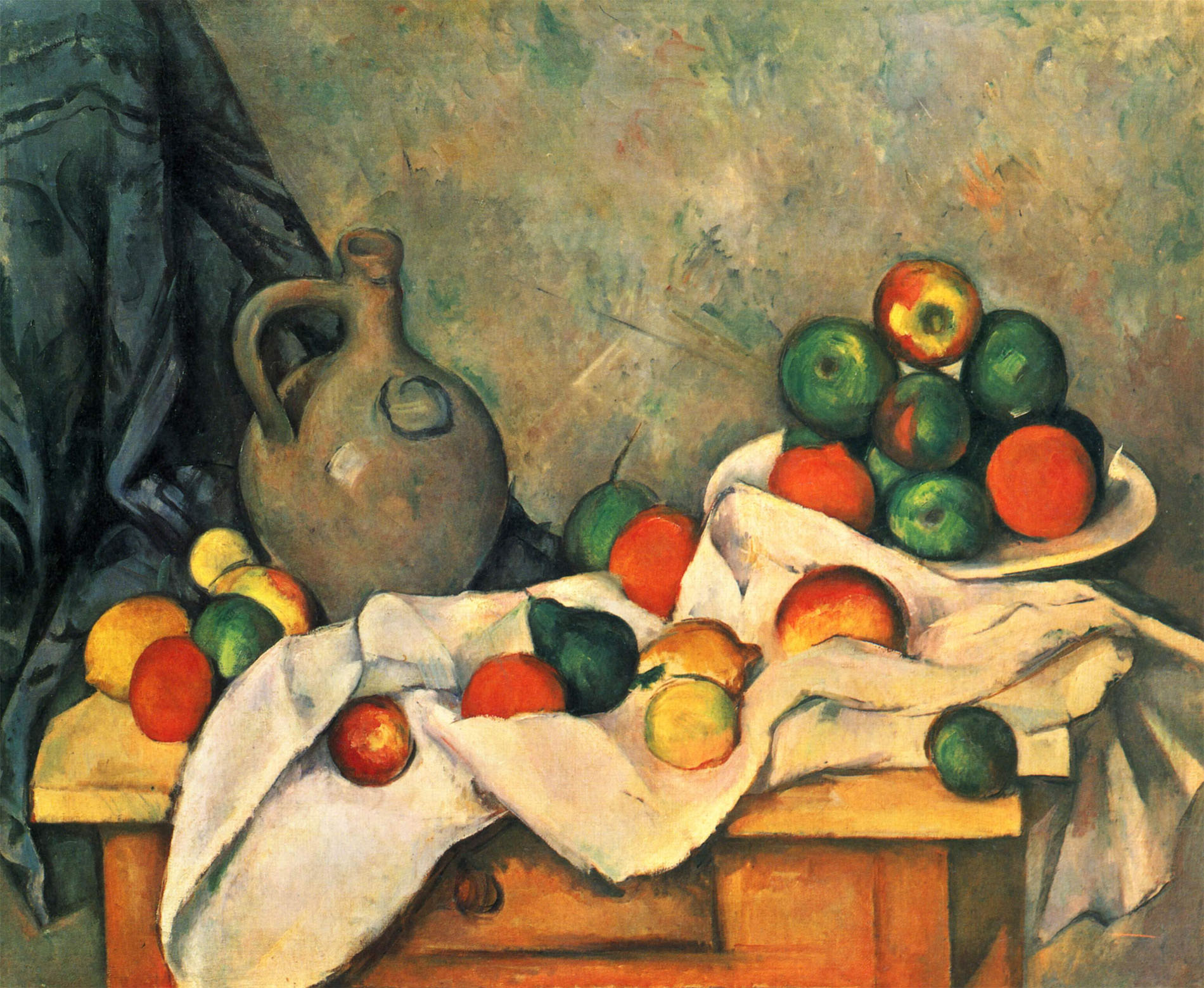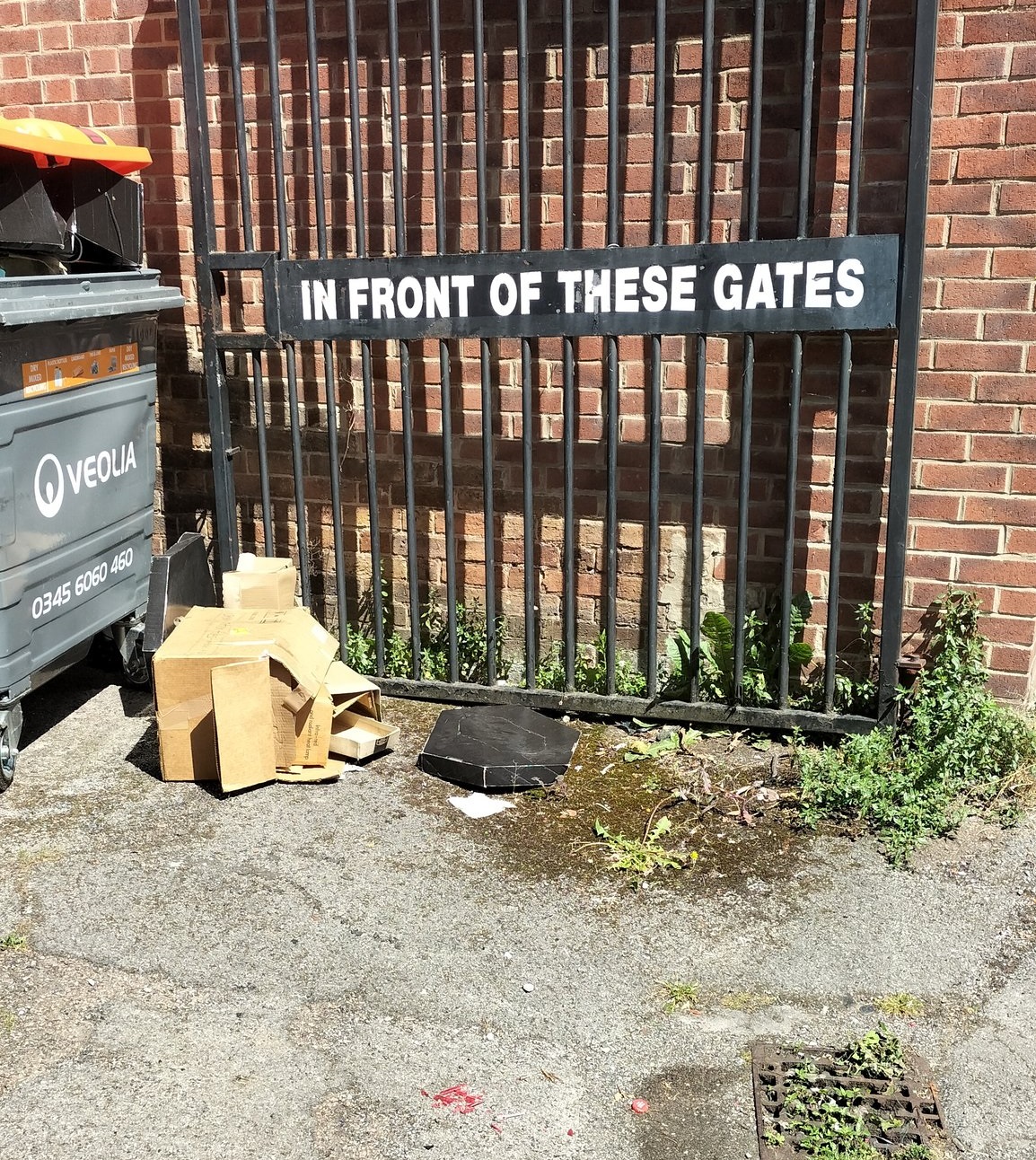
Almost every piece of classical music of the Baroque and Classical periods is titled according to either its patronage, the circumstances of its writing, or just by a description of its instrumental arrangement. Morton Feldman has written somewhere that titles of this last sort, seemingly prosaic, have the same sort of charm as the titles of still life paintings, and so there’s some relation in my mind between Cézanne’s Curtain, Jug and Fruit and Feldman’s own Piano and String Quartet.

In a discussion about titling pieces of music and writing, Stilton told me that in the Oxford History of Western Music, a four thousand page, five volume behemoth of a survey that I have not read, musicologist Richard Taruskin devotes some small attention to the history of titling music pieces. One of the Romantic period’s less well remarked innovations, he writes, is that pieces of music were frequently given more descriptive and fantastical titles whilst simultaneously 19th century observers would adopt a seemingly completely contradictory idea of music as a totally transcendental mode of pure expression, idealist ‘absolute music’.
While Robert Schumann never attempted anything quite as bombastic as Wagner’s Gesamtkunstwerk (nor as hideous, I might say) he did once write that “the aesthetics of one art is that of the others too; only the materials differ.” Schumann’s 1837 Op. 12, Fantasiestücke, consists of twelve short piano pieces each with their own funky titles. The seventh is called Traumes Wirren (Dream’s Confusion) and the second is called Aufschwung (soaring). Taruskin asks us to consider the third: Warum? (Why?). In what is probably a bit of a reach, Taruskin suggests that the purpose of this title is not just simple self description (David Ewen writes that the piece proceeds with “gentle questioning” and ends with an “inconclusive answer”—ridiculous), but instead that it puts the listener in direct confrontation with itself through the bondage of this plaintive interrogation.

I walk past this scene sometimes in Nottingham city centre. That little red spot on the ground in front of this gate is the lid of a Coke bottle. It says “Please recycle me”. A few weeks ago I had an idea that I would start collecting food packaging that announces some sort of personality or selfhood on the part of the product, which is what the “me” on this Coke bottle does, and make a collage out of them.

Besides this lid, I have a fragment from a lemonade bottle that asks to be recycled, a fragment from a tube of sweets that claims it is made of paper, and a fragment from a carton of oat milk that claims to be vegan. The idea I had originally was to produce this eerie tapestry of clamouring voices from commodities that might, by assembling these voices together on canvas as a nexus of a viewer’s attention, resemble the same collection of voices that communicates with us constantly from supermarket shelves, the sides of buildings, and even from the litter on the ground. I had to stop the project for two reasons. The first is that it was depressing: both the prospect of having to collect and store enough litter to make the collage and the implication of the artwork itself. The second is that, to my surprise, once I actually started trying to spot these diminutive first person voices I found that almost all of them had to do with recycling and with being vegetarian or vegan. I had not anticipated that the most cutesified, individualist, and identitarian elements of the mass produced multimedia cacophony would be these offenders from Capitalism’s Green sector.
It is something of a truism among socialists that advertising is a social evil. Its purpose is to alter and manipulate minds, and psychological manipulation in this manner is readily identified as abusive when it occurs within human relationships. As much as giant images of white women enjoying perfume are both ugly and insidious, it is the written elements that concern me most. Particularly where ‘I’ and ‘Me’ are concerned. George Herbert Mead’s 19th century differentiation between these two pronouns—as respectively the psychological subjectivity of an individual and as the socialised instance of a person within a larger social machine—could only ever have been useful as a complete social philosophy before the 20th century’s mass production minced these categories up completely. Barthes was the last semiotician gifted enough to be able to consistently make sense of the shit we have to deal with every day when we visit a supermarket. I wonder if walking into a Tesco in 2022 might have defeated him.
The gate pictured above is one of a set of two. The other gate says “do not park”, so that when the gates are closed a coherent instruction of prohibition can be read across them. “Do not park in front of these gates.” Instructions of this type make up the other side of modernity’s cacophony of fragments: we are constantly being told by things to behave in certain ways. Of course, there are often good reasons for this. In this case, parking in front of those gates would block the driveway from being used. This rational explanation is essentially irrelevant to the psychological and spiritual phenomenon of this indeterminate cloud of disembodied dialogue.
A third of American adults have not read a book since high school. Outside of digital screens, the phenomenology of which consists of a different but equally remote contortion of experience, the entirety of their engagement with the written word, the greatest invention of the last thousand centuries, is with this fusillade of sentences. Alien murmurings of psychological abuse written on products and billboards, and instructions from the environment on how to conduct themselves. I have rarely seen the gates I picture above closed. Because of the way in which the left gate is positioned, I rarely even see that part of the message, and only ever see “IN FRONT OF THESE GATES” as a fragment of text, more unusual and confrontational than any of the fragments we have from Pre-Socratic philosophers. Taruskin attributes to Schumann a title that makes an image of our own subjectivity: a title that brings us into its orbit and makes a machine of ourselves considering it. As the environment of our ugly modern cities is covered with instructions from voiceless authority, the stochastic motion of these spaces in their regular operation dismembers this one sign, on this one gate, until it simply spells out to its readers an exact description of their spatial situation in relation to itself. When I read it, I am in front of these gates.
“The eyes of an animal when they consider a man are attentive and wary. The same animal may well look at other species in the same way. He does not reserve a special look for man. But by no other species except man will the animal’s look be recognised as familiar. Other animals are held by the look. Man becomes aware of himself returning the look.”
—John Berger, About Looking

(Of course, by placing the message on your screen here as you read, I have dislocated the space between reader and sign.)
Decorating Space and Time
Film Acting and Identity
A Secret Church Music and the Silence of John Cage
On the Internet